For those who don’t want the answer handed to them, but do want a hint.
“Block By Block”
ThinkFun games – thinkFun.com
Block by Block 3D Puzzle
a 7-piece stacking puzzle that asks you to match 60 different three-dimensional patterns! Block by Block helps players sharpen their spatial thinking skills and have fun at the same time
The puzzle pieces are the same as the famous Soma Cube, which was a craze in the 1970’s.
Here are three pieces that form a base you might be able to remember.

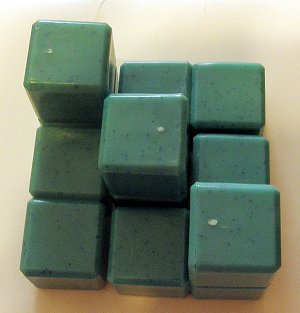
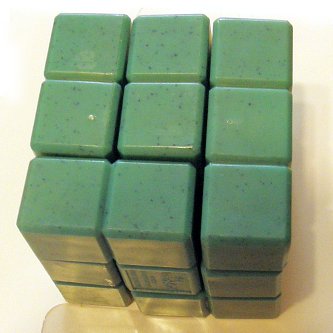
Tetris
Tetris is one of the few video-computer games I have enjoyed.
Tetris is a tile-matching video game created by Russian software engineer Alexey Pajitnov in 1984.
Spectrum HoloByte, Inc. was a video game developer and publisher, founded in 1983 in Boulder, Colorado.
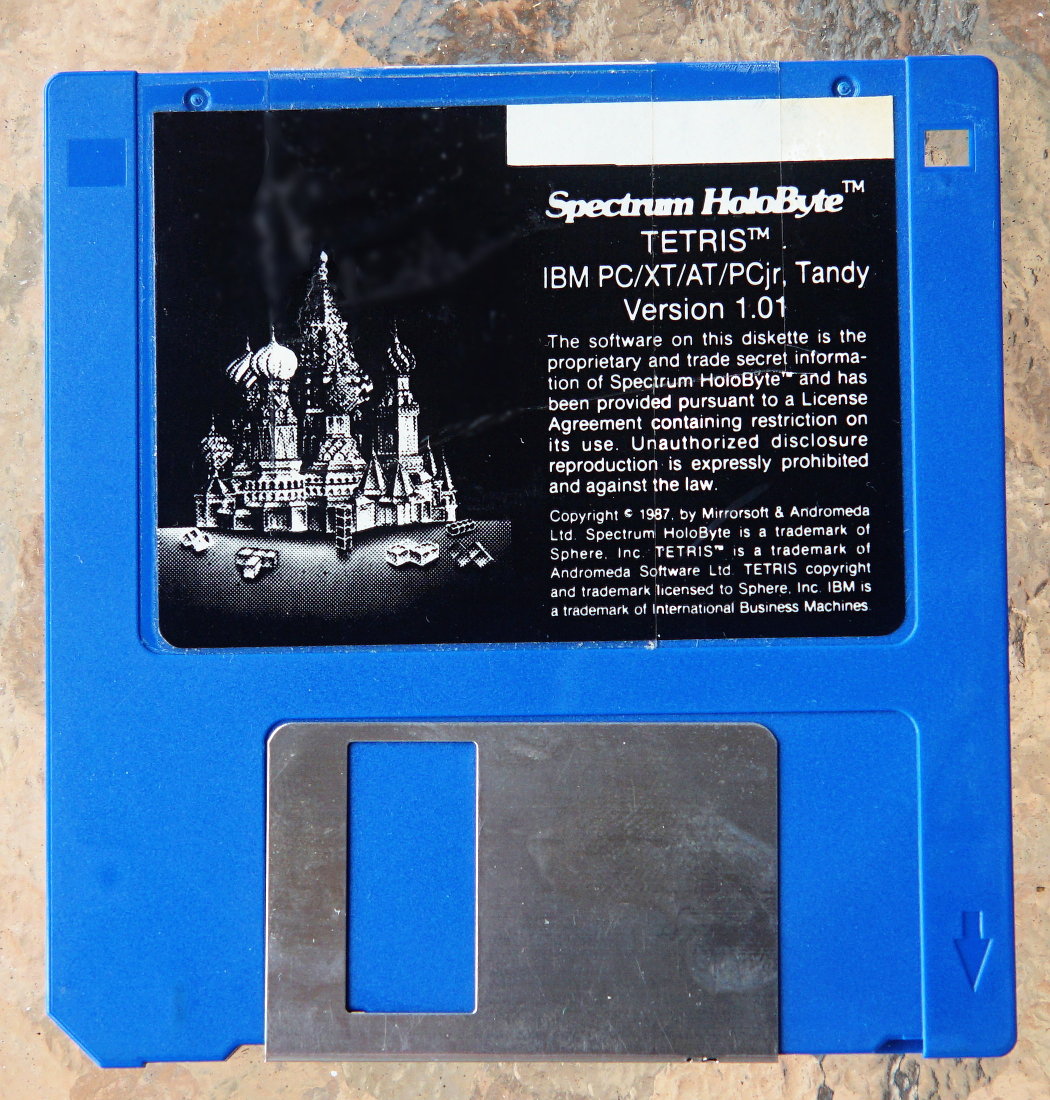
In 1979, Alexey Pajitnov joined the Computer Center of the Soviet Academy of Sciences as a speech recognition researcher. While he was tasked with testing the capabilities of new hardware, his ambition was to use computers to make people happy.
For Pajitnov, “games allow people to get to know each other better and act as revealers of things you might not normally notice, such as their way of thinking.
Inspired by his favorite puzzle board game, Pentominos, Pajitnov created an electronic game that let players arrange puzzle pieces in real time as they fell from the top of the playing field. The resulting design was a game that used seven distinctive geometric playing pieces, each made up of four squares. Pajitnov called this game “Tetris,” a combination of “tetra” (the Greek word meaning “four”) and “tennis” (his favorite sport).
tetris.com/about-us
Pajitnov presented Tetris to his colleagues, who quickly became addicted to it. It permeated the offices within the Academy of Sciences, and within a few weeks it reached every Moscow institute with a computer. A friend of Pajitnov, Vladimir Pokhilko, who requested the game for the Moscow Medical Institute, saw people stop working to play Tetris. Pokhilko eventually banned the game from the Medical Institute to restore productivity.
Pajitnov sought to adapt Tetris to the IBM Personal Computer, which had a higher quality display. Pajitnov recruited Vadim Gerasimov, a 16-year-old high school student who was known for his computer skills. Gerasimov adapted Tetris to the IBM PC over the course of a few weeks, incorporating color and a scoreboard.
His superiors in the Academy were not necessarily happy with the success of the game, since they had not intended such a creation from the research team. Furthermore, intellectual property did not exist in the Soviet Union, and Soviet researchers were not allowed to sell their creations. Pajitnov asked his supervisor Victor Brjabrin, who had knowledge of the world outside the Soviet Union, to help him publish Tetris. Pajitnov offered to transfer the rights of the game to the Academy, and was delighted to receive a non-compulsory remuneration from Brjabrin through this deal.
In 1986, Brjabrin sent a copy of Tetris to Hungarian game publisher Novotrade. From there, copies of the game began circulating via floppy disks throughout Hungary and as far as Poland. Robert Stein, an international software salesman for the London-based firm Andromeda Software, saw the game’s commercial potential during a visit to Hungary in June 1986.
Spectrum HoloByte sold over 100,000 units in the space of a year.[41] According to Spectrum HoloByte, the average Tetris player was between 25-45 years old and was a manager or engineer. At the Software Publishers Association’s Excellence in Software Awards ceremony in March 1988, Tetris won Best Entertainment Software, Best Original Game, Best Strategy Program, and Best Consumer Software.
In 1991, Pajitnov and Pokhilko emigrated to the United States. Pajitnov moved to Seattle, where he produced games for Spectrum HoloByte. In April 1996, as agreed with the Academy ten years earlier and following an agreement with Rogers, the rights to Tetris reverted to Pajitnov. Pajitnov and Rogers founded The Tetris Company in June 1996 to manage the rights on all platforms, the previous agreements having expired. Pajitnov now receives a royalty for each Tetris game and derivative sold worldwide.
en.wikipedia.org/wiki/Tetris
tetris.com/play-tetrisgems/ www.freetetris.org/game.php
www.mathsisfun.com/games/tetris.html
One Tough Puzzle
9 piece Jigsaw Puzzle By Great American Puzzle Factory
“This is a truly outstanding example of something looking far simpler than it really is. One Tough Puzzle is a red (or gold) pieced mind menace you are sure to find challenging if not altogether vexing!
“Assemble the nine pieces, 3 across, three down. There should be 6 interlocks that extend beyond the outline of the square, 6 that are inside the outline of the square, and no holes in the middle.”
here are 2 hints
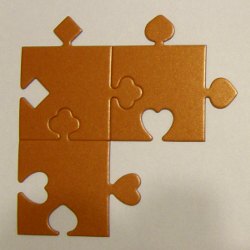
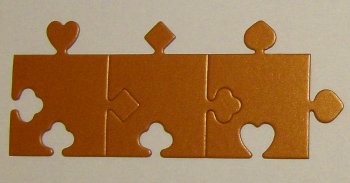
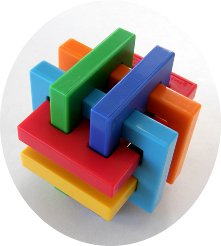
ThinkFun Gordians Knot:
I got this one before learning that the interlocking parts were generated with a computer programmed to create the most difficult design possible! It comes with an answer booklet … about 70 moves to take it apart and the same moves in reverse to put it back together!

How to Solve Snake Cube Brain Teaser, a Hint

Brain Box “The Impossible Cube” hint
Brain Teaser Wooden Puzzle hint
aka “the Snake Cube”
3x3x3 Brain Teaser Magic IQ Snake Cube
“…but it has been around for many years and called many different things. Serpent Puzzle, Rattler Wooden Puzzle, Dragon Tail Puzzle, etc.”
“This sneaky wooden serpent is a real challenge to coil up into a cube. It has a chain of 27 wood cubes. These wood cubes are connected by an elastic band running through the middle. The aim of the puzzle is to arrange your snake in such a way that there will be a 3x3x3 cube.”
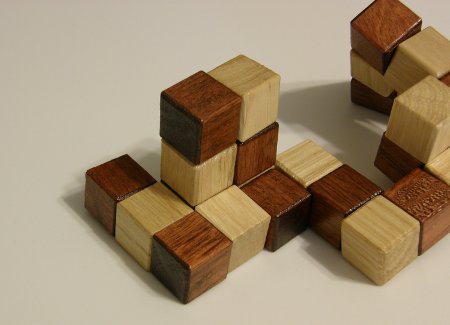
“You don’t have to be a rocket scientist to unravel this cube into a snake (just twist and swivel the 27 wooden cubes to uncoil the serpent) but it certainly helps to be a genius to put it back together.”
“The ‘Brain Box’ gives you everything for the ultimate brain workout. Flex your brain muscle with the workshop exercises for memory, lateral thinking, concentration and logic. Follow the practical tips and techniques and do the puzzles and exercises to keep your brain active and fit. This box includes: 3-D wooden cube puzzle.” – Charles Phillips
This photo shows the first 11 blocks of one way to solve it.
How do you solve the impossible cube step by step